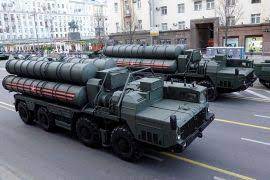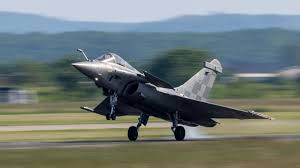No fear of America… Preparing for a big deal with Russia on S-400, R-37M, Su-30MKI jets, India will give a befitting reply to Trump’s betrayal!

a
India’s Defence Minister Rajnath Singh has held a very important meeting with Russian Defence Minister Andrey Belousov on the sidelines of the Shanghai Cooperation Organisation (SCO) Defence Ministers’ meeting held in Qingdao, China. According to reports, this meeting is being considered a very important bilateral meeting. The clarity and frank language in which India’s defence needs and technical cooperation with Russia have been talked about in India’s official press release is an indication that India is now moving towards entering into a much-needed defence agreement with Russia to rapidly upgrade its air defence and air-to-air missile capabilities. A report this week said that India has seriously advanced the talks towards purchasing the S-500 air defence system from Russia.
The official press release issued after the meeting between Rajnath Singh and the Russian Defence Minister specifically talks about air defence systems, air-to-air missiles, modern capabilities and air platforms. This press release is very surprising because defence deals are not talked about so openly. But India has done this, so it can be considered a message to America, which has ‘betrayed’ India during Operation Sindoor. Defense industry experts have already been indicating that India wants cooperation from Russia for indigenous production of air-to-air missiles and their integration in Su-30MKI fighter aircraft.
Local production of air-to-air missile in India
At Aero India 2025, Russia officially proposed the sale of its long-range R-37M air-to-air missile, which is exported as RVV-BD, to India. The Russian proposal proposed local production of this missile in India under ‘Make in India’. In March this year, Russian state-owned arms company Rosoboronexport (ROE) confirmed that Russia and India were discussing joint development and production of modern guided aircraft missiles. The purpose of this partnership is not only to meet India’s military needs but also to export it to third friendly countries. That is, if there is an agreement between India and Russia that India can make air-to-air missiles under Make in India and sell them to a third country, just like India sells Brahmos missiles.
Further increase in the striking power of Su-30 MKI
During Operation Sindoor, India fired Brahmos missiles on Pakistani military bases from Su-30 MKI fighter planes. The block-upgrade plan for the Su-30MKI fighter planes of the Indian Air Force was already underway, but after Operation Sindoor, it has now gained momentum. Russia has made it clear that it will work closely with Indian defense companies in this upgrade. This upgrade will be carried out in India under the leadership of HAL. The proposed upgrade for Su-30MKI includes new AESA radar, electronic warfare system, infrared search and track (IRST) and modern cockpit interface. This upgrade will make the aircraft as per the requirements of 5th generation warfare. Pakistan is about to buy J-35A fighter aircraft from China and it is believed that India is making aggressive preparations to counter Pakistani threats and as part of this, Su-30 MKI will be upgraded.
Virupaksha radar… India’s bet on indigenous technology
Writing in the Eurasian Times, former Indian fighter jet pilot and senior Air Force officer Vijayendra K Thakur has written that the PIB press release not only underlines the need to advance India’s air platforms, but also clearly states that “supply of S-400 systems, upgradation of Su-30MKI and very soon the purchase of important military hardware were at the center of the talks in this meeting.” He has written that the Pakistan Air Force used the Chinese PL-15 missile against India, which was a strategic setback for India. Its range and kill-profile have made the Indian Air Force feel the new need to have long-range strike capability. RVV-BD, which has a range of more than 300 km, can be the answer to this threat, provided the sensors and fire control system of the Su-30MKI are upgraded. Without this, such a long-range missile will remain only in name.
Therefore, the most important part of the Su-30MKI fighter aircraft upgrade will be the Virupaksha AESA radar developed by DRDO. It will have about 2400 gallium nitride based modules and will be able to track a target of 1 square meter from a distance of 600 km. This radar is also advanced in multi-target tracking and electronics component module resistance. But one challenge is that integrating this advanced radar on an old platform like Su-30MKI without the technical support of the original equipment manufacturer (OEM) is complex and risky. That is why India needs Russia’s help.
OEM technology and India’s dependence on Russia
Most of the world’s fighter jet manufacturers, such as French Dassault, which has built the Rafale fighter jet, do not share their source code. Dassault does not want to give India the source code of Rafale. This is the reason why India is unable to install its indigenous radar system or Brahmos missile in the Rafale fighter jet. Russia’s technical assistance is extremely important to successfully integrate the Virupaksha radar and RVV-BD missile in the Su-30MKI. With the help of Russia, the Indian Air Force can also partially use these missiles with the existing N011M Bars radar. Also, expanding the network-based warfare system, connecting the Su-30MKI with the S-400 and AEW&CS platforms can increase its capabilities manifold. In such a situation, India will create a tremendous kill chain and enemy aircraft can be shot down very easily.
That is, the plan to upgrade Su-30MKI fighter aircraft and equip it with missiles like RVV-BD will mean taking the strength of the Indian Air Force to the next level. If the integration of Virupaksha radar and RVV-BD missile is possible, it will mean that India will be able to equip each of its Su-30MKI fighter aircraft with a 300 km range air-to-air missile. Due to production in India, logistical support will be much easier, training will be better and integration in the entire Air Force will be done on time. This strategic cooperation with Russia establishes India as a partner, not just a buyer, and this is the real flight of India’s self-reliant defense policy.







